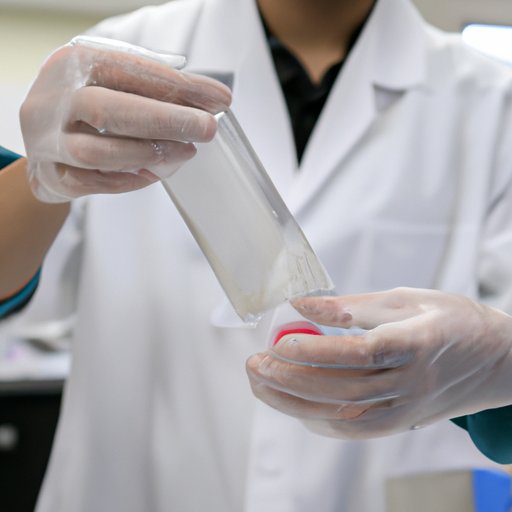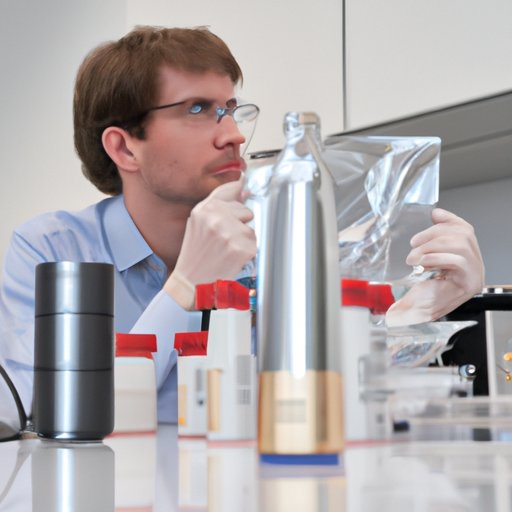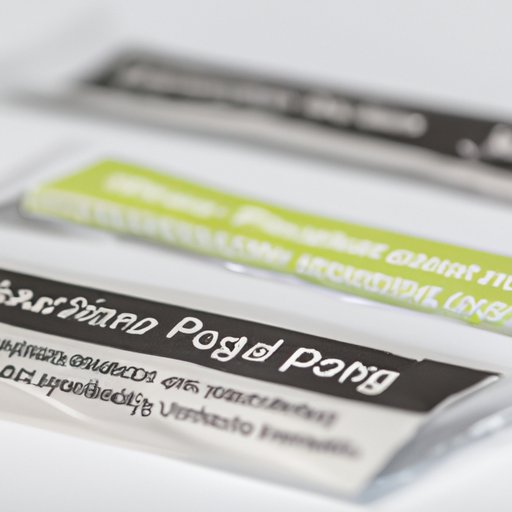Introduction
Packaging science is an interdisciplinary field of study that focuses on the design, production, and distribution of packaging materials. It is a rapidly advancing field with a wide range of applications in various industries, particularly the food industry. This article will provide an overview of what packaging science is, how it is used in the food industry, the principles of packaging science, the benefits of using packaging science, and how it is evolving in the future.

Exploring the Basics of Packaging Science
Packaging science has a long history, dating back to the early 1800s when glass bottles were first used for storing and transporting liquids. In the mid-1800s, tin cans were introduced as a form of packaging for canned goods. Since then, packaging science has evolved to include a variety of materials and products, such as plastic containers, cardboard boxes, and shrink-wrapped items.
Packaging science is used in the food industry to ensure the quality, safety, and freshness of food products. It is also used to protect food from contamination, spoilage, and damage during transport and storage. Packaging materials must be able to withstand extreme temperatures, humidity levels, and other environmental factors. Additionally, they must meet specific regulatory requirements in order to ensure the safety and quality of the food they are protecting.
The principles of packaging science involve the selection of appropriate packaging materials, the design of effective packaging systems, and the maintenance of the integrity of the packaging throughout its lifecycle. Packaging materials must be chosen based on their ability to protect the product, as well as their cost-effectiveness and sustainability. The design of the packaging system should take into account the product’s characteristics, its intended use, and the conditions in which it will be stored and transported. Finally, the packaging system must be maintained in order to ensure the safety and quality of the product.
Analyzing the Benefits of Packaging Science
Packaging science offers many benefits to the food industry, including improved quality control, increased safety and protection, and enhanced branding opportunities.
Improved quality control is one of the key benefits of packaging science. Packaging materials can help to maintain the quality of food products by providing a barrier against contaminants and other environmental factors. Additionally, packaging materials can be designed to prevent food spoilage and extend the shelf life of products. According to a study conducted by the Institute of Food Technologists, “packaging plays a major role in preserving the quality, safety, and shelf life of foods.”
Increased safety and protection is another benefit of packaging science. Packaging materials can protect food products from physical damage, contamination, and other environmental hazards. Additionally, they can be used to store hazardous materials in a safe and secure manner. A study published in the Journal of Food Protection found that “proper packaging of food products can reduce the risk of food-borne illnesses.”
Enhanced branding opportunities is a third benefit of packaging science. Packaging materials can be used to create a unique and recognizable brand identity for a product. Packaging design can be used to communicate a company’s values and mission, as well as to attract customers. According to a study conducted by the International Journal of Management and Marketing Research, “packaging can influence consumer perception and behavior in the marketplace.”

Examining the Future of Packaging Science
As technology advances, so does packaging science. In the future, there will be an increasing focus on technological advancements, sustainability, and new regulations and standards.
Technological advancements in packaging science will enable companies to produce more efficient and effective packaging materials. For example, intelligent packaging systems can be used to monitor and control the environment within the package in order to extend the shelf life of food products. Additionally, new materials and technologies, such as bioplastics and nanotechnology, are being developed to create more sustainable packaging solutions.
Increasing sustainability is another trend in packaging science. Companies are looking for ways to reduce their environmental impact by using recyclable and biodegradable packaging materials. Additionally, they are exploring methods of reducing waste and energy consumption in the production process. A study conducted by the International Journal of Greenhouse Gas Control found that “packaging can contribute significantly to reducing the environmental impact of products.”
Finally, new regulations and standards are being implemented in order to ensure the safety and quality of packaging materials. For example, the European Union has implemented strict regulations on the use of plastics in food packaging. Additionally, new standards are being created to promote the use of sustainable packaging materials.
Conclusion
Packaging science is an interdisciplinary field of study that focuses on the design, production, and distribution of packaging materials. It is a rapidly advancing field with a wide range of applications in various industries, particularly the food industry. This article has provided an overview of what packaging science is, how it is used in the food industry, the principles of packaging science, the benefits of using packaging science, and how it is evolving in the future.
Packaging science offers many benefits to the food industry, including improved quality control, increased safety and protection, and enhanced branding opportunities. In the future, there will be an increasing focus on technological advancements, sustainability, and new regulations and standards. Packaging science is an important field of study that will continue to evolve and grow in the years to come.
(Note: Is this article not meeting your expectations? Do you have knowledge or insights to share? Unlock new opportunities and expand your reach by joining our authors team. Click Registration to join us and share your expertise with our readers.)
